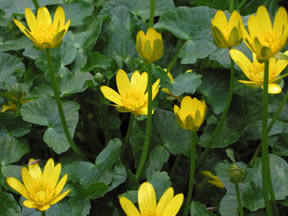
What To Look Out In The Woods
The cold still days of January are often interrupted by feeding birds. You may frequently see in gardens and parks mixed flocks of Redwing, Fieldfare and Blackbirds. These birds are from the thrush family and from a distance they appear the same. Under closer inspection you can see the array of colours within the plumage of our wintering guests.
In January many mammals are hibernating but one animal that you will see is the grey squirrel. This familiar critter is not indigenous to Britain and was introduced from America. In January you will often see them in pairs as this is their time of courtship.
We may feel that the wild places are barren of growing plants. This is mainly true as they are preparing to explode into action in the spring, when the warmer weather returns, but it is possible to see one of the first signs of spring in January, the snow drop. Also other plants are stirring. You may see on your walks the fresh leaves of the Lesser Celandine. This plants tuber, later in the year, can be harvested after the plant has flowered. It is important that the tubers are cooked well as it is of the potato family and is extremely poisonous when eaten raw!

“Since participating in the course, each time I enter the woods, I look at it in a different way; listening to what the animals and birds are doing. I can’t help but look for animal tracks or spot the darker indentations on grass or soil”…
Shuv, Educator
